|
|
|
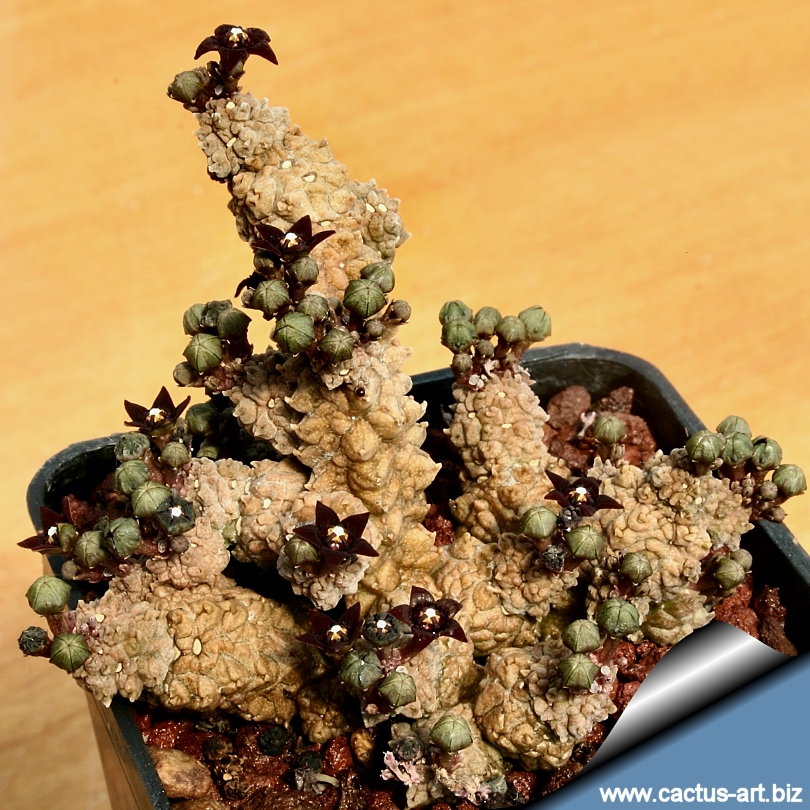
The small dark purple-black flowers.
|
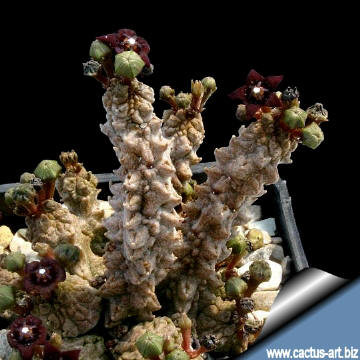 |
Description: This minuscule plant, with
thin, rough-tubercled, cylindrical stems looks nothing like the
other species, it branches from an early age, six months or so,
and its fruits (horns) are small but numerous,
adorning almost every shoot Cultivation: P. dodsonianus although not easy to
grow, is nonetheless easier and
quicker growing than the others
Pseudolithos and grows quite well in a greenhouse, it enjoy
surprising amounts of water when they're growing. They need a very
fast draining soil and protection from cold and damp, but doesn’t
like to get bone dry, even in winter, when plants must receive
regular light watering, this species is comparatively quite frost
resistant, but the minimum temperature must not lower below 0° C
(anyway it can tolerate occasional light frost for short period),
with adequate water supply this species can flower all the winter
long . They come well from seed, do reasonably well in cultivation
if given the right conditions. Since they're slow growing branching
plants they can stay for many years in a small container
But they remain quite expensive rarities.
|
|
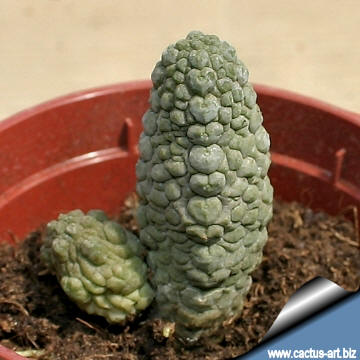
P. dodsonianus x P. migiurtinus
(Hybrid) |
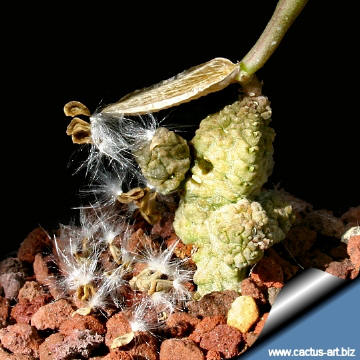
A mature seed pod with seeds |
|
Advertising
|
|
|
|
Family:
Asclepiadaceae (Apocynaceae)
(Milkweeds family)
Scientific Name:
Pseudolithos
dodsoniana
Lavranos) Bruyns & Meve,
Published in: Edinburgh. J. Bot. 52: 202 (1995).
|
|
Origin: P. dodsonianus
is a beautiful plant originated from Northern Somalia and Oman
This species together with P. caput-viperae and
P. mccoyi are the only freely branching members of the genus.
Originally classified as a Caralluma, was transferred into
Pseudolithos, as P. dodsonianus and now
again in the genus Anomalluma as A. dodsoniana
because of stem morphology and DNA researches.
|
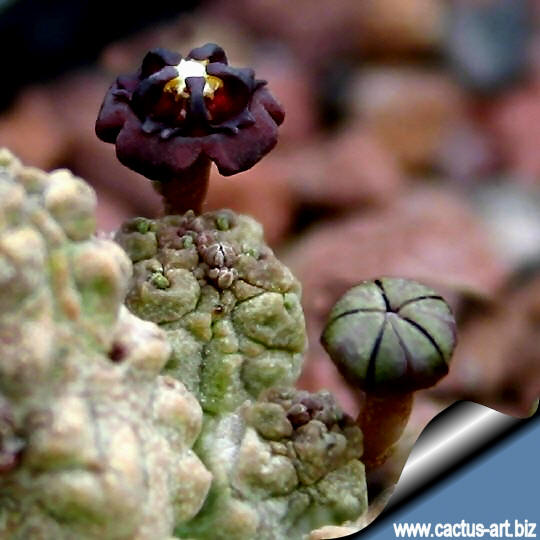
The flowers (Corolla 6 mm diam) produced
from near the tops of the plants, can be self fertile.
|
|
|
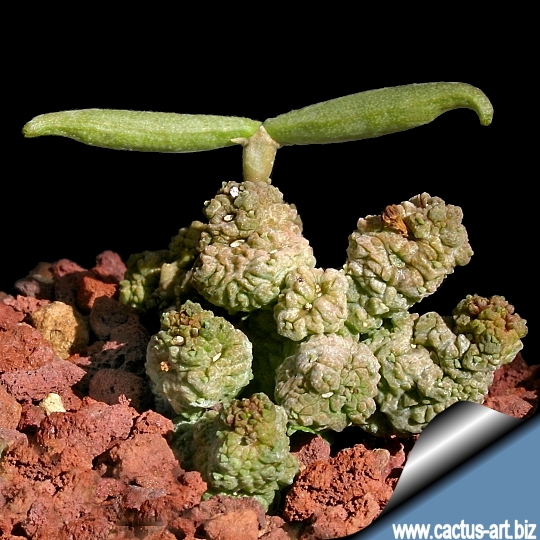
Pseudolithos dodsoniana x
Pseudolithos migiurtinus
Despite their obvious differences in growth form, and the fact that
they do not naturally
hybridise in habitat, these two species do
artificially produce some interesting grey or brown skinned
hybrids
which have pyramidal or
elongated shape.

 |
|